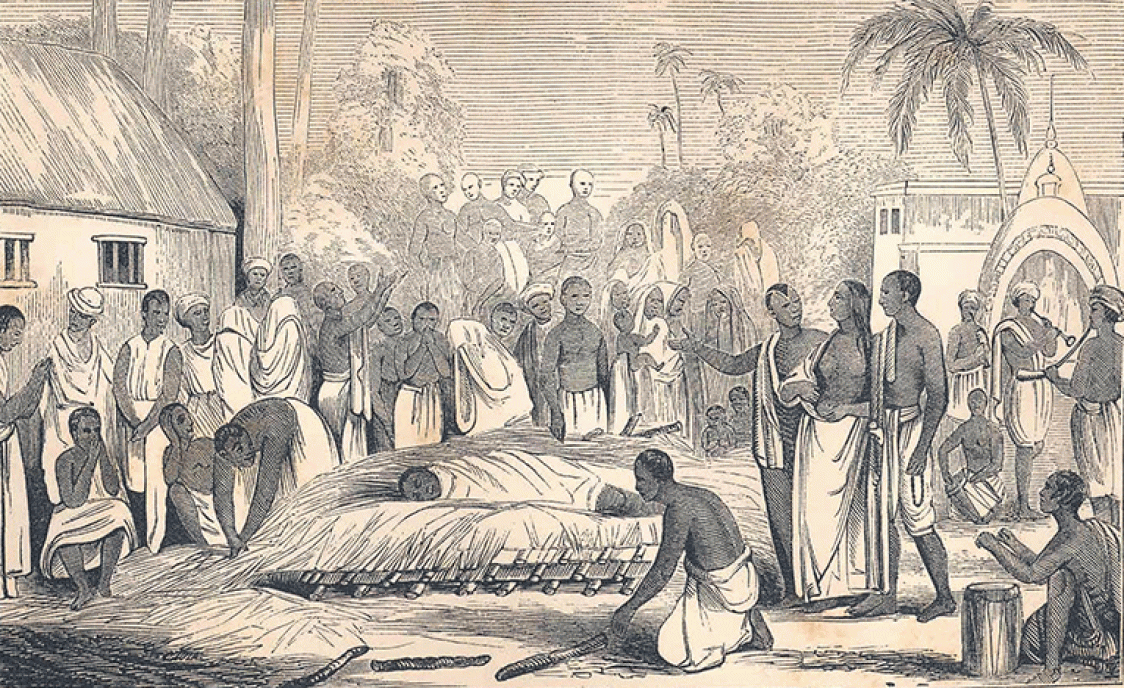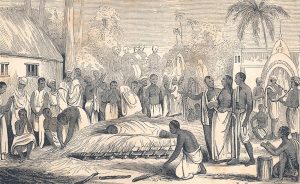THE DESERTED SANDS OF RAJASTHAN
By AAKRITI KAUSHIK
I wanted to get out of there. The palaces of the Pink city didn’t magnetise me anymore. The idea of spending my leisure time at all the known places puts me off. I could sense something that kept pulling me to tread those notorious sands. My journey did alter my opinion about life.
It was the summer of 2003. Mercury touching 48 degrees is normal, when we particularly talk about the western desert state of Rajasthan in India. Embedded in a small North Eastern district called Sikar is a place called Deorala, where, about fifteen years ago, a young 18-year-old woman was forced to burn herself alive on the death pyre of her late husband. The purpose of my visit to this infamous place was to have a feel of that horrific pyre, and the culture that led to this modern day incident of ‘sati’.
The ten hour long bus journey through the sands is enough for life-long sciatica! The sun was hot enough to melt iron and the sizzling wind wasn’t a ‘warm’ welcome either. My only help was my travel map. Following the road to the inner village, the only visible things were mud houses with camels tied to the outer posts of the porch. Tranquillity dominated the ambience. Only the sound of the windy spells was gushing. I asked myself the obvious, “Why am I here?”
Being always sentient towards women’s issues sometimes made me brand myself as a feminist! Maybe that was the reason for me setting foot on this off-the-beaten path. Maybe I wasn’t meant to be here. But, something later made me realise I was wrong.
The idea of asking a native about the place didn’t seem alright and safe. So, I kicked off by asking a woman about a place to stay. Her gaze was queering enough to make me understand that my question should have been put forth differently. Come on! I was in a village of people who have made their own laws for degrading women and I was alone out there looking for a place to stay?
It took me little time to explain that I was a journalist from New Delhi travelling to villages on my holiday, before she offered me to stay with her for only a matter of two days. “Stay as long as you are here, you are our guest,” she said with a little grin. Made me feel relieved.
I spent the night deciding the itinerary for the next day. The landlady promised to show me the village, so we left at about seven in the morning. I somehow dared to ask her the question that had haunted me for years. “Yes, it’s true," she said, "the girl named Roop Kanwar was made to set herself afire as her husband died. But, the reason was that she was a woman of bad character, a harlot, you see.”
Before I could interrupt with my next question, a child came running to her and uttered something so fast I could not have a handle on. The lady’s face turned gloomy and pale. I wondered if someone died or some mishap occurred. Even before I could ask, she requested me to look at the rest of the village myself as she had to leave for home immediately. “Why, what’s wrong?” I enquired. She left without a word. I could sense the way my question was knowingly avoided.
From the kid I learnt that the lady’s pregnant daughter-in-law experienced labour pains, so she had to go back and help. Help? I wondered if there was any midwife in the village. However, being excited at the prospect of a first-hand experience of watching childbirth, I followed her back.
About fifty women gathered around the cot where the woman lay howling in pain. I made my way through, not to miss a bit of the action. The landlady and two other women helped push the baby out. Never knew I would ever witness such an unclean sight, though it was a beautiful and healthy baby girl. My altering thoughts about childbirth were abruptly disturbed by strange sounds.
As the baby was being washed, the gathering of women started to weep and moan. The baby’s mother, who was in tears, began to scream and begged the ladies to give back her child. Everything seemed beyond comprehension to me. Just when the ambience was making me feel out-of-place, I received the bolt from the blue: “Place her under the bed-post,” said one of the ladies. “No, putting her in the milky water would be better,” said another.
Amidst the howls and cries, the baby, with her head upside down, was positioned under one of the bedposts. What? I wanted to ask, wanted to speak. The landlady sat on the very corner of the bed, there was silence everywhere, the screams and cries disappeared, and suddenly everyone prepared to leave. The dead corpse of the baby was handed to her father to be taken for burial.
Hundreds of baby girls are ‘killed’ in similar atrocious ways. I had known and heard about the traumas of being a girl. But my experience made me wonder now how the women manage to battle for survival.
This was the place that revived the evil practice of ‘sati’, which died out years ago during the British rule in India. And, still, there are places like these where a girl is looked upon as a burden on the family, as just another expense. Be it a minutes-old baby or a grown woman, life treats her inhumanly all the time. This is not a biased feminist view, for sure. It’s a hope against hope that time would change these people and their perceptions about women.
Illustration: The favorite Wife of Sevajee, preparing for the Suttee, from an English history book, 1851



